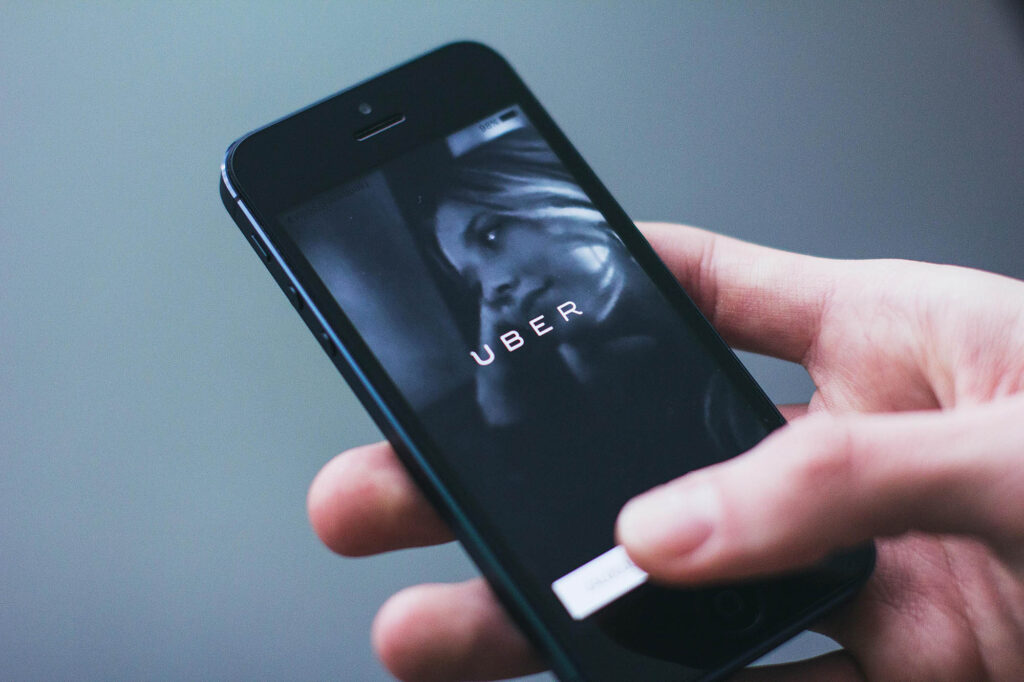“I’m visiting London with my child and we’ll be taking taxis to get around the city. Do children need car seats in London taxis, or are there different rules for taxis compared to regular cars? I want to make sure we’re following the law and keeping my child safe.”
It’s great that you are thinking ahead about safety when travelling in London.
As you may well know, there are laws that require the use of car seats for certain children when travelling in a private vehicle (basically a car or other vehicle that isn’t public transport like a bus).
Types of taxi cabs in London
Before setting out the rules, it might be helpful to explain the nature of taxis in London as they fall into two main categories.
Taxis

London’s black hackney carriages, commonly known as black cabs or simply ‘taxis’, are iconic licensed vehicles that have been serving the capital for centuries.
These distinctive vehicles can be hailed directly from the street when their yellow ‘TAXI’ light is illuminated, or found at designated taxi ranks throughout the city, making them instantly accessible without advance booking. Although you can also hail a black cab via the app Gett (affiliate – use code GTXNMPO when signing up which gets you and us up to £10 credit each).
All black cab drivers must obtain a license from Transport for London (TfL) and pass the legendary ‘Knowledge of London’ test, a rigorous examination that requires memorizing every street, landmark, and route within a six-mile radius of Charing Cross – a process that typically takes two to four years to complete. This comprehensive geographical expertise means black cab drivers can navigate London’s complex road network without GPS, taking passengers efficiently between any two points in central London.
The vehicles themselves are purpose-built with spacious interiors, wheelchair accessibility, and a distinctive design that allows for a tight turning circle to navigate London’s narrow streets, making them uniquely suited to the capital’s urban environment.
Minicabs

Minicabs, also known as private hire vehicles (PHVs), encompass a broad category of licensed taxi services in London that includes app-based platforms like Uber, Bolt, and Lyft, as well as traditional minicab operators such as Addison Lee.
Unlike black cabs, minicabs cannot be hailed from the street or pick up passengers at taxi ranks – they must be pre-booked through phone calls, apps, or online platforms, with the booking creating a legal contract between the passenger and operator.
All minicab drivers must hold a private hire driver’s license from Transport for London (TfL), pass enhanced background checks, and complete topographical assessments, though the requirements are less stringent than the Knowledge test required for black cab drivers.
The vehicles used range from standard saloon cars to luxury vehicles and people carriers, and while they must be licensed by TfL and display identification, they don’t follow the distinctive design requirements of black cabs.
The general requirement for child car seats in private vehicles
The general rule is that children must use a child car seat until they’re 12 years old or 135 centimetres tall, whichever comes first. Over the age of 12 or 135cm tall and they must wear an adult seat belt, but there is no requirement to use a car seat.
Car seats are either chosen by height or weight (which you choose is up to you) and the various different types of seats are set out here.
Exemptions to the general rule for taxis and minicabs
There are exceptions to the general rule about car seats when travelling in taxis and minicabs.
Your child can travel in a taxi or minicab without a seatbelt but there are some limitations.
Firstly, they must be sat in a rear seat (not the front seat – which isn’t an option in a taxi in any event).
Secondly, if your child is aged three or older, then they must wear an adult seat belt. Or, if they are under three then they should go without a seat belt.
The exemption to the requirement for car seats is a practical, rather than a safety one. The exemption recognises that tourists and residents may not always have access to car seats when using taxis and minicabs for short journeys. It tries to balance practicality with some restrictions and requirements.
Ultimately, whether or not you feel happy travelling in a vehicle without a car seat is a choice for you. For the most part, traffic and road restrictions within Central London are usually such that you won’t ever reach high speeds, so the risk of being involved in a significant road accident is relatively low. The times when you are more likely to reach higher speeds are longer journeys, such as journeys to and from the airport or outside of London.
If you don’t feel comfortable without a car seat, your options are:
- take public transport;
- book a cab with a car seat, note that generally taxis do not offer car seats, but some minicab companies (but not all) do offer child car seats and they will need pre-booking well in advance (if you are looking for a cab with car seats Carrot Cars, a minicab company that offers car seats in London); or
- buy car seats – consider a folding car seat like this one (affiliate), which you could then carry about, stash at the bottom of a pram or treat as luggage.
We hope that helps you to prepare for your trip to London. Have the best time making memories with your family!


